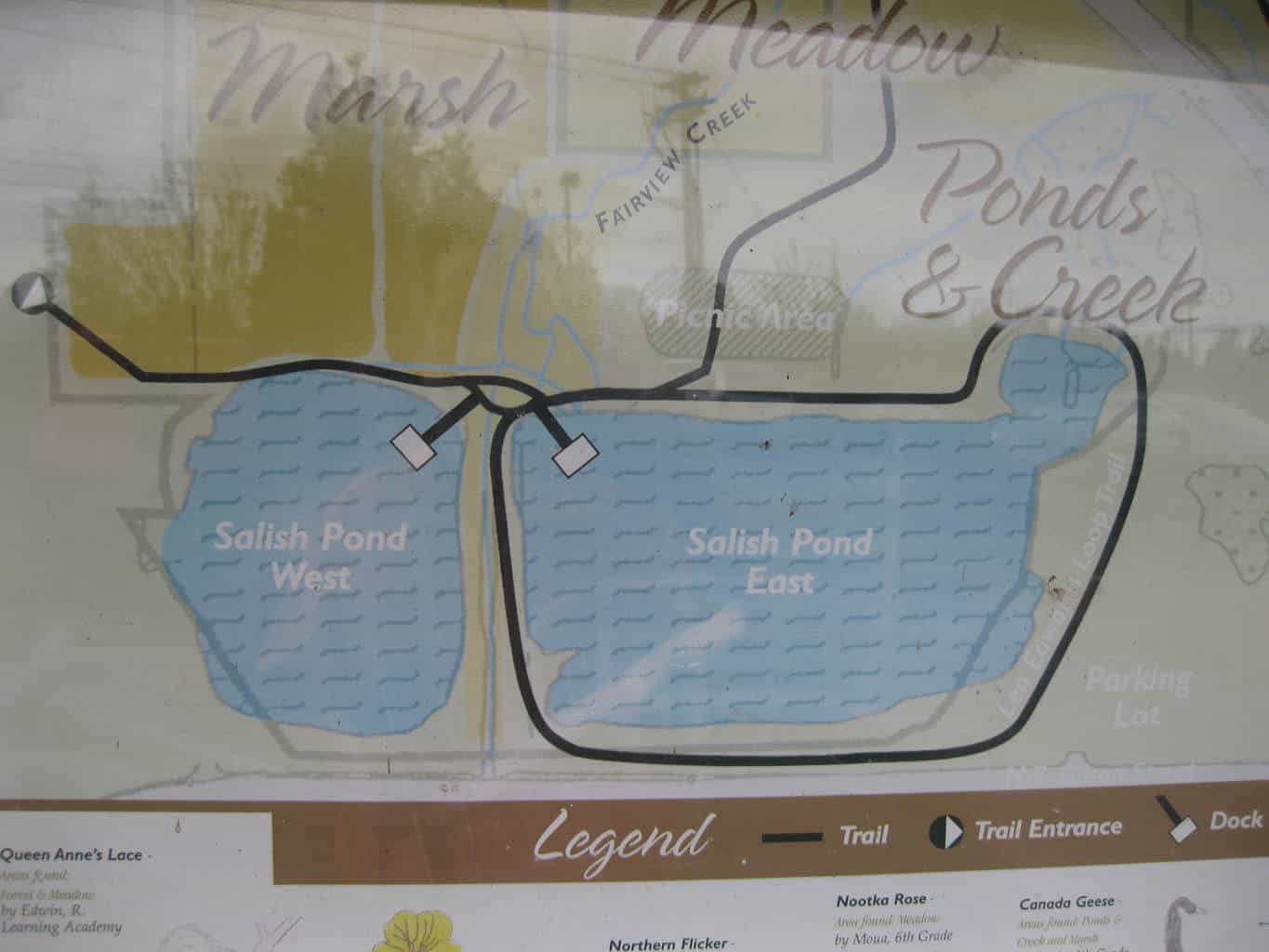These two ponds are located in a pleasant park setting just off busy Northeast Glisan Street in the city of Fairview, located across the street from Gresham and a quick drive from anywhere between Troutdale and Portland’s east side.
The smaller West Salish Pond is deeper and cleaned up and restored a few years back, and it has been stocked with quite good numbers of trout recently.
West Salish Pond Trout
West Salish is the pond the Oregon Department of Fish and Wildlife stocks periodically with trout, often between late winter and spring and again in the fall.
Check our trout stocking schedule below based on ODFW’s annual plan. The agency’s weekly recreation reports also may list in-season changes to the stocking schedule.
Timing is important here. Trout fishing will be best in the days right after the fish are dumped in but will very quickly fade as it gets nearly fished out in no time.
How to Catch Trout
To be honest, you’ll see most trout caught here by anglers still fishing with bait.
A bait that floats off the bottom about 2-3 feet on a light leader is often the easiest ticket to catching a trout (or a limit).
Berkley PowerBait is the most common bait, but other jarred baits or natural choices such as nightcrawlers, red worms, or garden worms from your yard will do the trick. You can use a miniature marshmallow to float a worm or similar bait off the bottom, although it’s not usually necessary.
I also like using a bobber with 24 to 36 inches of light leader below the float, especially when I bring younger anglers. The float moves along the surface or pops underwater to signal that a trout has grabbed the bait.
This tactic requires a sinking bait. I usually go with a quarter to half of a nightcrawler on a simple baitholder hook.
More active anglers will cast and retrieve lures such as spinners and spoons in bright colors or metallic hues.
I prefer lure fishing when I plan to release the trout I catch because lures more often result in a lip-hooked fish, while trout fairly often engulf bait too deeply to survive.
If you need more information on how to catch trout, read our primer: Trout Fishing: Basic How-To Techniques and Tips.
East Salish Pond Bass and Panfish
While West Salish also has modest populations of warm-water species, the larger and shallower East Salish Pond is managed for these types of resident fish.
These other fish aren’t stocked, but they generally take care of themselves as long as many anglers release the larger specimens, especially with long-lived species such as bass.
East Salish has more interesting habitat, especially for largemouth bass and crappie, and you are likely to do better there if this type of fishing appeals to you.
Bass Fishing
Bass often strike artificial lures that resemble prey species such as fish, frogs, crayfish and worms, while crappie readily strike jigs and other lures that look like small minnows.
Springtime can be especially good for targeting the pond’s largest bass in shallow water, where they will build nests for the annual spawning period.
Throw soft-plastic lures, shallow-running crankbaits and other lures around shallow cover. Bass often will attack to protect their nests.
Again, bass can be too easily fished out of smaller water bodies like East Salish Pond, so we suggest you enjoy the fight, snap a quick photo, and let the fish return to making baby fish. And, honestly, big bass aren’t great eating and can contain elevated levels of harmful mercury compared to other fish.
Bass fishing is super fun if you learn how to do it. Our simple guide to bass fishing techniques and tips is a good place to start.
Panfish and Catfish
East Salish also has bluegill, bullhead catfish, and potentially larger channel catfish.
Bluegill are insect eaters. When you find them, they are easy to catch on small worms, mealworms, and even artificial flies.
Catfish also like worms and nightcrawlers. Cut fish, prepared doughs and other baits are also good options used with standard catfishing techniques.
All of these fish in East Salish Pond may be caught here year-round, but they bite best in warmer seasons. Note that there are special limits for some of these species.
Location and Access
The ponds are easy to reach. From Portland, take Glisan east into the Gresham area and the ponds will be on your left just beyond Northeast 201st/202nd Avenue.
Or it might be faster to take Interstate 84 to the Fairview exit and go south on Fairview Parkway to Glisan; turn right and the ponds are almost immediately on your right.
There is an improved public parking lot at East Salish Pond, reached off the entrance of The Lodge at Lake Salish Apartments, and some roadside graveled parking along Glisan adjacent to West Salish.
A trail also comes in from Salish Ponds Elementary School in the neighborhoods west of West Salish Pond.
A full trail system will allow you to reach good bank fishing locations in both ponds, and there is a fishing dock on the north side of each pond.
The access is safe for anglers of all abilities, making this a good spot near home to take kids fishing.
For information about nearby fishing spots stocked with trout, read Blue Lake Fishing and Mt. Hood College Pond Fishing.
2024 West Salish Pond Trout Stocking
| Date Range | Total |
|---|---|
| Feb 12-16 | 500* |
| May 6-10 | 1,000 |
| May 27-31 | 1,000 |
| Sep 30-Oct 4 | 667* |
Stocked fish are legal-sized rainbow trout unless otherwise noted. Stocking schedules are subject to change for a variety of reasons. The ODFW Weekly Fishing Report linked under Oregon Resources below may provide updated information.
Find more fishing spots in Multnomah County
Oregon Resources
ODFW Weekly Fishing Report
ODFW Trout Stocking Schedule
Oregon Fishing Regulations
National Weather Service

